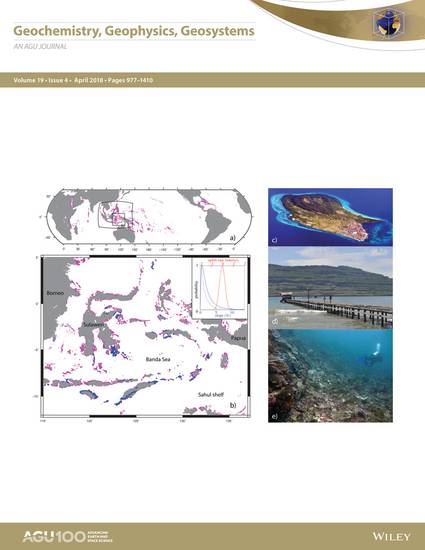
Article
Tuffaceous Mud is a Volumetrically Important Volcaniclastic Facies of Submarine Arc Volcanism and Record of Climate Change
Geochemistry, Geophysics, Geosystems
(2018)
Abstract
The inorganic portion of tuffaceous mud and mudstone in an oceanic island arc can be mostly volcanic in origin. Consequently, a large volume of submarine volcaniclastic material is as extremely fine‐grained as products of subaerial eruptions (<100 µm). Using results of IODP Expedition 350 in the Izu rear arc, we show that such material can accumulate at high rates (12–20 cm/k.y.) within 13 km of the nearest seamount summit and scores of km behind the volcanic front. The geochemistry of bulk, acid‐leached mud, and its discrete vitriclasts, shows that >75% of the mud is volcanic, and that most of it was derived from proximal rear arc volcanic sources. It faithfully preserves integrated igneous geochemical information about arc evolution in much the same way that terrigenous shales track the evolution of continental crust. In addition, their high sedimentation rate enables high resolution study of climate cycles, including the effects of Pleistocene glaciation on the behavior of the Kuroshio Current in the Shikoku Basin south of Japan.
Plain Language Summary
Submarine arc volcanism near subduction zones is both more voluminous, and more finely fragmental, than commonly believed, and this lasts for millions of years. These conclusions result from re‐interpretating the origin of fine‐grained sediments previously thought to be clay‐sized particles from continents (hemi‐pelagic mud). The evidence comes from geochemistry, scanning electron microscopy, X‐ray diffraction, and grain size analysis of the sediments. The muds contain >25% continentally‐sourced material only during Pleistocene glacial stages when it was delivered to IODP drill site U1437 by large meanders of the Kuroshio Current.
Keywords
- Volcanism,
- Volcaniclastic sediment,
- Sediment geochemistry,
- Island arc,
- Kuroshio current,
- IODP
Disciplines
Publication Date
April, 2018
DOI
10.1002/2017GC007300
Publisher Statement
© 2018. American Geophysical Union. All Rights Reserved.
Citation Information
Gill, J., E. Bongiolo, M. Takashi, C. Hamelin, M. Jutzeler, S. DeBari, A.-S. Jonas, B. Vaglarov, L. Nascimento, **M. Yakavonis (2018) Tuffaceous mud is a volumetrically important volcaniclastic facies of submarine arc volcanism and record of climate change, Geochemistry, Geophysics, Geosystems, v. 19, p. 1217-1243 https://doi.org/10.1002/2017GC007300
